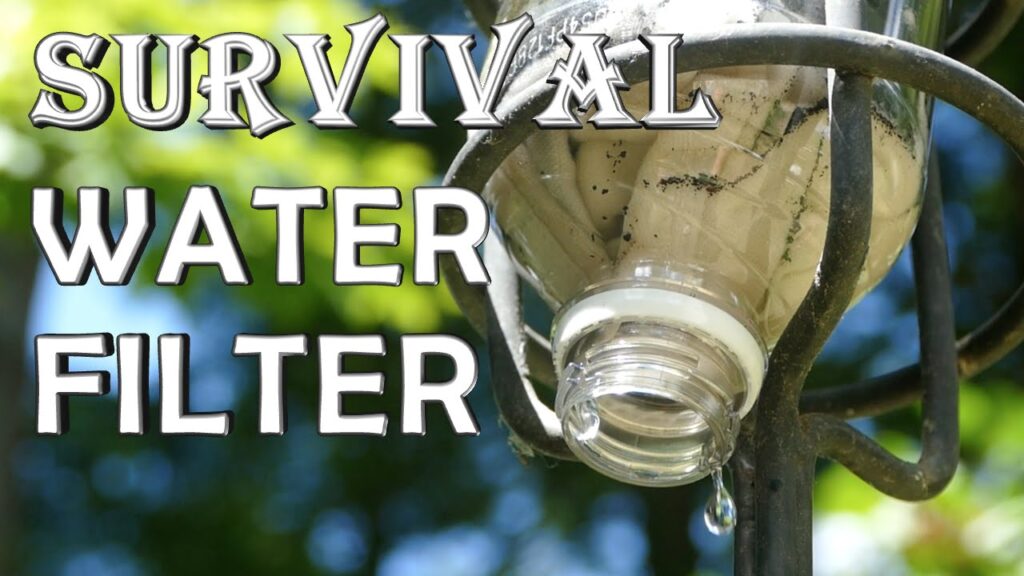Survival in the great outdoors often hinges on our ability to secure clean and safe drinking water. While nature provides us with abundant water sources, not all are fit for consumption. In this guide, we’ll delve into the art of building a bushcraft water filter system, equipping you with the knowledge to transform murky waters into a lifeline.
The Essence of Water Filtration
When venturing into the wilderness, having a basic understanding of water filtration is crucial. Waterborne pathogens and contaminants pose a significant threat, and a reliable filtration system is your first line of defense. Let’s explore the key components of a bushcraft water filter. Here are 10 Tips on Understanding the Basics of Bushcraft Water Filtration
- Nature’s Classroom: The wilderness offers a unique classroom for survivalists. Understanding the basics of bushcraft water filtration means embracing nature as your mentor, learning from its elements, and utilizing them to your advantage.
- Know Your Enemy: Waterborne pathogens and contaminants are invisible adversaries. To combat them effectively, familiarize yourself with the common threats in the water sources you may encounter. This knowledge is the foundation of crafting an efficient water filter system.
- Improvisation is Key: In the wild, you won’t have a specialized water filtration system at your disposal. The art of bushcraft lies in improvisation. Learn to identify and use natural materials around you, turning them into a reliable water filter.
- The Sand’s Role: Think of sand as nature’s strainer. As the first layer in your filtration system, it blocks larger particles and debris, preventing them from entering your drinking water.
- Gravel’s Textured Touch: Gravel adds texture to the filtration process. Its varied sizes create a layered effect that captures smaller impurities, making your water filtration more thorough and effective.
- Charcoal’s Magic: Charcoal isn’t just for the grill – it’s nature’s purifier. Understanding its adsorption properties is crucial. Charcoal traps toxins and impurities, ensuring your water is not only clear but also safe for consumption.
- Container Selection Matters: The container you choose for your water filter plays a significant role. Opt for a plastic bottle or a cylindrical vessel, and don’t forget to cut the bottom for an open-ended filter system.
- Cloth for Extra Protection: Placing a cloth or bandana at the bottom of your container serves as an additional layer of protection. It prevents sand from seeping through and ensures the smooth operation of your improvised water filter.
- Layering Technique: The key to a successful bushcraft water filter lies in the layering technique. Follow the order – cloth, sand, gravel, and charcoal – and repeat until your container is filled. This systematic approach ensures each layer plays its part in purifying the water.
- Percolation Process: Understanding the percolation process is crucial. Pour water through the top of your improvised filter system and let it percolate through the layers. Witness the transformation as it emerges at the bottom, purified and ready for consumption.
Mastering these basics will not only sharpen your survival skills but also deepen your connection with the natural world. The more you understand the intricacies of bushcraft water filtration, the more confident and self-reliant you become in the great outdoors.
Choosing the Right Materials
In the world of bushcraft, improvisation is key. Craft your filter using natural materials like sand, gravel, and charcoal. These readily available elements work together to sift out impurities and bacteria, leaving you with potable water.
Sand
Begin your water filter system with a layer of sand. Acting as a natural strainer, sand removes larger particles and debris, preventing them from entering your drinking water.
Gravel
Layering gravel on top of the sand enhances the filtration process. The varied sizes of gravel particles create a textured surface that captures smaller impurities, leaving your water cleaner.
Charcoal
Adding a layer of charcoal acts as a natural purifier. Charcoal has remarkable adsorption properties, trapping toxins and impurities, ensuring your water is safe for consumption.
Crafting Your Bushcraft Water Filter
Step-by-Step Guide
Find a Suitable Container
Begin by selecting a container for your water filter. A plastic bottle or any cylindrical vessel will suffice. Cut the bottom of the container to create an open-ended filter system.
Layering the Materials
Start by placing a cloth or bandana at the bottom of the container to prevent the sand from seeping through. Then, layer the sand, gravel, and charcoal in the order discussed earlier. Repeat this process until the container is filled.
Filtering the Water
To filter the water, pour it through the top of your improvised filter system. Allow the water to percolate through the layers of sand, gravel, and charcoal, emerging at the bottom as clean, purified water ready for consumption.
The Importance of Bushcraft Water Filtration
Adaptability in the Wild
In survival situations, adaptability is key. Knowing how to construct a bushcraft water filter system empowers you to adapt to different environments and ensures you can quench your thirst even in the most challenging circumstances.
Lightweight and Portable
Commercial water filters can be bulky and heavy. A bushcraft water filter, on the other hand, is lightweight and portable, making it an ideal companion for backpackers, hikers, and survival enthusiasts.
Conclusion
In the realm of survival, the ability to procure clean water is paramount. Building a bushcraft water filter system not only hones your wilderness skills but also ensures your well-being in the face of adversity. Recall that nature provides the tools; it’s up to us to use them wisely. So, the next time you find yourself in the great outdoors, take a moment to appreciate the art of bushcraft water filtration – your ticket to a safe and hydrated adventure.







